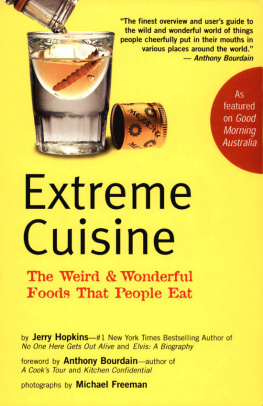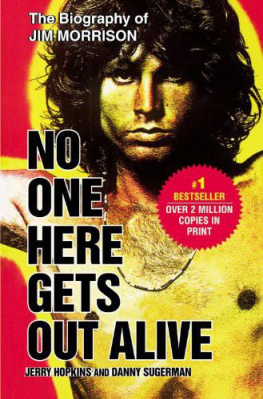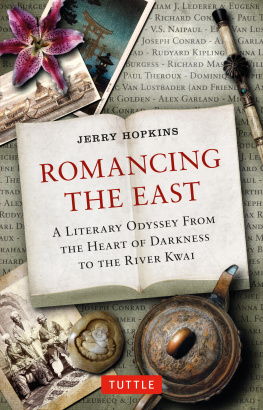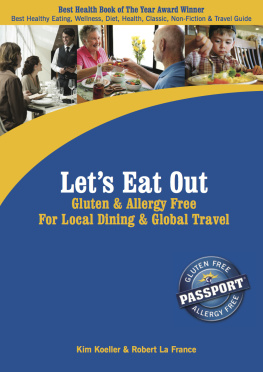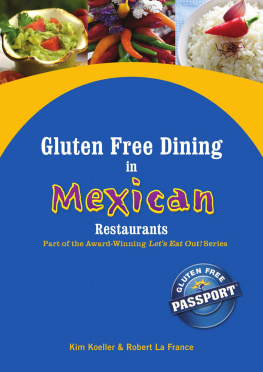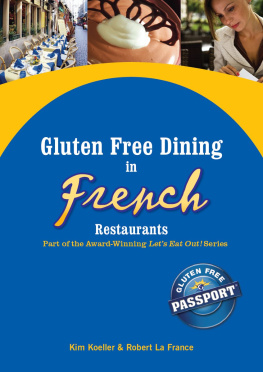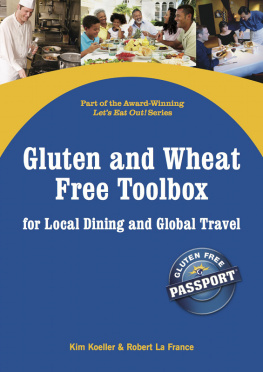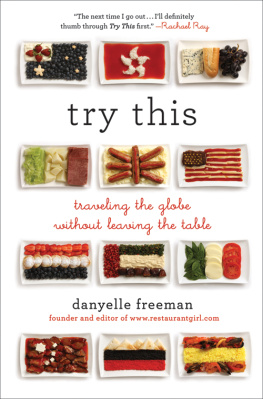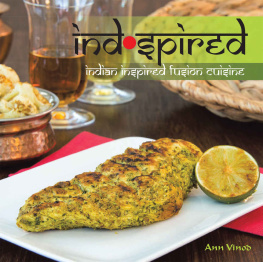afterword
ONLY WHEN WE'RE INFANTS are we willing to put just about anything into our mouths, usually as a means of identification. As we age, we become more selective and by the time we're adults most of us are set in our ways about what we eat and drink, and what we consumed when we were young generally is what we consume for the rest of our lives, with rarely much if any experimentation. This attitude, called neophobia, "the fear of the new," protects us from eating unknown, possibly harmful substances. It also denies us much joy.
There is a contrary point of view about what we consume called neophilia, "the love of the new." Margaret Visser, author of the superb book The Rituals of Dinner: The Origins, Evolution, Eccentricities, and Meaning of Table Manners (1991), believes that the neophiles are gaining on the neophobes, that diners are becoming more daring.
"Human beings are capable of seeking for variety, almost in itself," she wrote. "They will try new ways of cooking, new ingredients, new combinations of tastes. They hunt through books describing the food of cultures very different from their own, searching for new things to eat, new flavors and textures to try. Such people have usually had occasion to conquer and break out of their 'fear of the new' through contact with other cultures and the availability of a wide assortment of 'strange' foods. We admire and envy such people, and feel we should try to imitate them, thinking how sophisticated, knowledgeable, and broad-minded they are. Yet neophilia, in fact, is a typical human reaction to eating. Our own culture is experiencing at the moment a strong bias, or perhaps more specifically a pull exerted by the trend-setting 'upwardly mobile' classes, toward neophilia."
Ms. Visser wrote this before the SARS "epidemic" became, in late 2002 and through the early months of 2003, the latest Big Scare to shake the dinner table. When the outbreak of Severe Acute Respiratory Syndrome was tracked back to its apparent origin in the wild game market in Guangzhou, China, and quite possibly to the civet, a brown, furry creature with a cat-like body, long tail, and striped weasel-like face, and scientists found it carried a virus similar to that causing SARS, the exotic food market took a serious hit. Investigators discovered similar viruses in bats, snakes, and wild pigs in the same marketplace and further determined that approximately half of the exotic animal vendors in Guangdong Province tested positive for the virus, although evidently they were unaffected by it. Thousands of animals were destroyed and hundreds of vendors were put out of business, pushing what remained of the market underground and the prices for the animals up, while the world got another reason to curtail any urge it might have felt to taste something unusual or new.
I still count myself among the neophiles. I remain convinced that caution is wiseas it always has beenbut also that it shouldn't be wrapped in fear. It's likely that the next time I'm in Guangzhou, I'll eat differently from the way I ate there the last time I visited. But I will not put handcuffs on my curiosity and my willingness to take some gastronomical risk. I believe that all of life is defined by risk and that those who do everything they can to avoid it, might just as well be dead. Just because there were outbreaks of Mad Cow Disease in England several years ago, an affliction that could reoccur somewhere else at any time (as it did in Canada in 2002), does that alone mean we should give up beef? Back in the Sixties, those who did drugs were advised to know their dealer and the source. So, too, it is wise, so far as it's possible, to consider the source of what we eat. I further believe that just because some scientist found a bad cobra in China, that doesn't mean I shouldn't eat rattlesnake in the United States.
Bottom line is that I hope Ms. Visser is right, that the neophiles are gaining on the neophobes, and there's growing evidence that she is. At the same time, there also still exists a yawning gastronomical gap between them, at least geographically and culturally When it comes to eating "strange" foodthat which is considered odd in most of the developed world, but elsewhere may merely be lunchmore people do it than don't. For example, I live in Thailand, where just about anything that moves, and a lot of what doesn't, is welcomed to the plate, and after a few years of a predominantly Asian cuisine, I was somewhat taken aback when I visited the United States, where I was born and raised. There, I asked many of the people I met what the strangest thing was they ever ate. Snails was about as weird as it got. North America, I learned, is where neophobes rule the kitchen and what comes out of it.
My former father-in-law was one of them. A rich real estate developer in California, a dedicated tennis player and an avid reader, he had learned more than half a dozen languages and played numerous musical instruments, yet when the dinner bell rang, he subscribed to the philosophy of Wittgenstein who hated being confronted with a change in his diet, regarding the effort involved in adapting to it a waste of his energy. I don't know if it was limited energy or imagination that governed my wife's father's appetite, or that of Wittgenstein's, for that matter. All I do know for sure is that my father-in-law told me that in all his numerous visits to the world's capitals he always stayed in a Sheraton hotel because he knew that every morning his plate of scrambled eggs would be exactly the same.
My mother, alas, was formed in the same uninteresting mold. As exciting as it ever got in my house was on Thursday nights when my father took his picky palate to his weekly Lions Club meeting and Mom added sliced onions to the hamburger goulash. She also once told me that she didn't see any wisdom in spending time on what would be consumed in fifteen minutes. While I eventually learned that if it was worth eating, a meal could go on for hours, delightfully.
The worst neophobe I ever met was, ironically, a woman who ran a cooking school and catering service in British Columbia. When I visited that city, my publisher hired her to follow some of the recipes in my book Strange Foods (1999) so I'd have some dishes for show-and-tell when I appeared on two Canadian television shows.
It wasn't the thinly sliced, deep-fried pigs' ears or the roasted bone marrow or the prickly pear veggie dish or the tomatoes stuffed with humus and fried crickets that caused her upset. It was the deep-dish bulls' ball pie, made from a recipe I found that dated back to 16th century Rome.
Following the instructions of Bartomolo Scappi, chef to Pope Pius V, she boiled four bulls' testicles with salt, then cut them into slices and sprinkled the result with more salt, pepper, nutmeg, and cinnamon. Next, in a pie crust she layered the sliced testicles with mince of lamb kidneys, ham, marjoram, cloves, and thyme. I must say it looked delicious and I enjoyed describing the contents and history on the show. But thinking the pie was going to be used again on the second program, I resisted eating any. When I arrived at the studio for that show, however, the woman told me that all the dishes were different and she didn't have the pie with her.
"How'd it taste?" I asked.
"You must be joking," she said. "I threw it away."
"You threw it away? Without tasting it? Weren't you even just a little bit curious?"
She said something genteel that really meant "Hell, no!" and then she explained her distress. "You can't just walk into a market and buy this sort of thing," she said. "I had to call my regular butcher and he had to order it from the abattoir. This is a man I use for all my meat orders, and when I told him what I wanted..."
She seemed at a loss for words, but finally said, "I can't tell you what this has done to my reputation in Vancouver."

